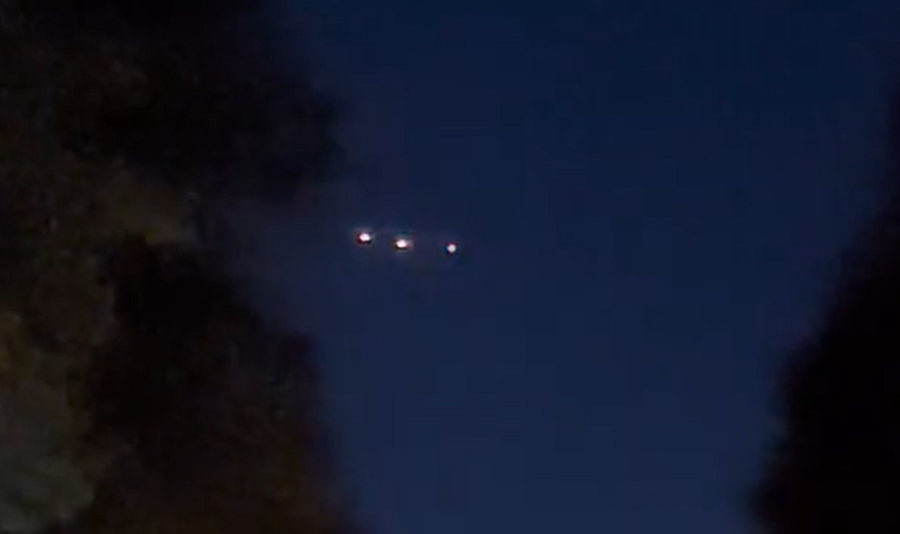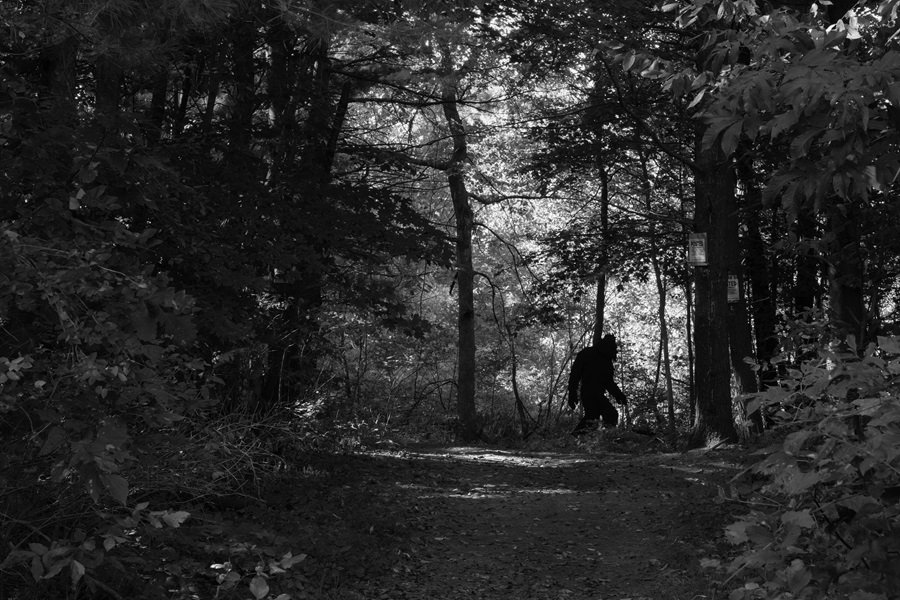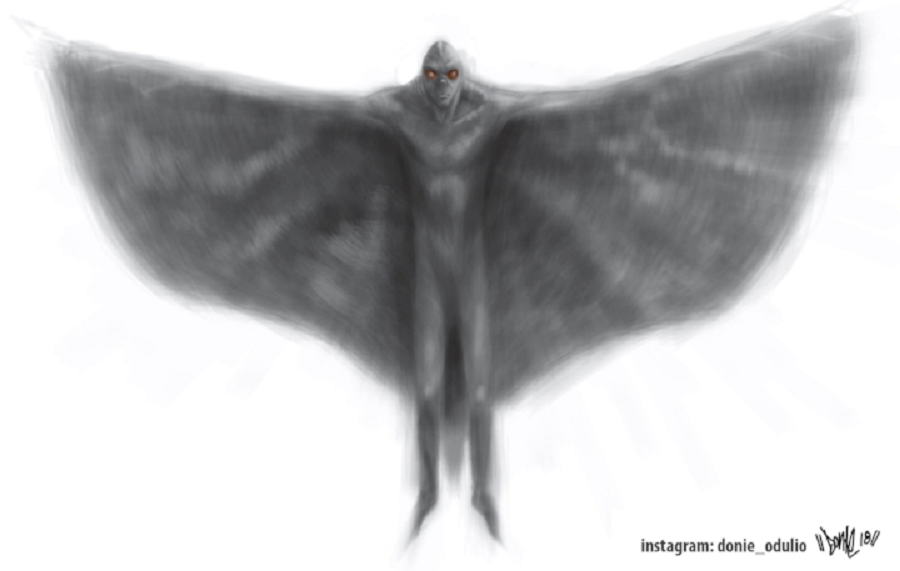Wildlife Biologist Says Latest 'Thylacine' Photos Actually Show Pademelon
One of five photos shared in the Thylacine Awareness Group of Australia's latest video. (Thylacine Awareness Group of Australia / YouTube)
Following a February 22nd announcement on YouTube in which Neil Waters—president of the Thylacine Awareness Group of Australia (TAGOA)—declared that the group had “found a thylacine,” the evidence of such a claim has been called into question.
According to Waters, several photos of what he claimed were thylacines had been captured recently via camera trap on the island of Tasmania.
Waters first shared the evidence with the Tasmanian Museum and Art Gallery (TMAG), which in turn showed the photos to wildlife biologist Nick Mooney.
In Waters' opinion, the animal in these photographs is unlikely to be a pademelon because it looks "much more like a four-legged animal than a hopping one.”
“For starters, it’s got a dead straight back,” he said. “It appears to be walking on all fours. It has a nice, stiff tail, pointing straight out, like everyone reports about thylacines. And what’s that we have here? Look, stripes." (Thylacine Awareness Group of Australia / YouTube)
The TMAG later released a statement saying that Mooney had determined that the photos were most likely of a pademelon—a small marsupial, similar to a wallaby, which moves around by hopping.
“Nick Mooney has concluded, that based on the physical characteristics shown in the photos provided by Mr. Waters, the animals are very unlikely to be thylacines, and are most likely Tasmanian pademelons,” a museum spokesman said. “TMAG regularly receives requests for verification from members of the public who hope that the thylacine is still with us. However, sadly, there have been no confirmed sightings documented of the thylacine since 1936.”
A video rebuttal of Mooney’s determination, in which the TAGOA presented the evidence to the public for the first time, was shared to their YouTube channel on February 28th.
Reactions to the video have so far been mixed, although many of even the most favorable responses have labeled the evidence presented as inconclusive at best.
Those skeptical that the photos were of a thylacine largely thought they showed either a pademelon or domestic cat.
Many, too, questioned the reliability of Waters’ experts to identify such an animal, since he relied mainly on the opinions of veterinarians in examining his evidence, rather than wildlife biologists like Mooney.
All of the experts quoted in the video had their names withheld to "protect them from the ensuing sh*t storm," according to the video's description.
"Five vets have looked at it, and all five vets agreed that it certainly looked like a four-legged animal and not a macropod that hops," said Waters in the video.
Night vision images of what Waters believes to be a juvenile thylacine, due to its long muzzle, "little, rounded ears," and "broad head." (Thylacine Awareness Group of Australia / YouTube)
Arguing against the position that the animal is a pademelon, Waters said that it "looks like it’s walking, not hopping," adding that it appears to have a "nice, stiff tail, pointing straight out, like everyone reports about thylacines," and "several stripes on the tail, several stripes on the rump, and...a stripe going around its body."
He also pointed to "four distinct features about this animal that make it not a cat: the straight tail as it walks; the smooth, shiny hocks; the shaggy, coarse hair; and, of course, that very stocky body."
The TAGOA said that the only modifications made to the photos are that they "have been lightly treated for color correction and the subjects' surroundings have been mildly blurred to improve viewing,” and emphasized that, regardless of one's opinion of them, they "are not fake, this is not a hoax, [and] our experts are real people, not actors.”
Several instances of video and photographic evidence featuring supposed thylacines have come out of Australia in the last few years. In 2017, trail camera footage and pictures were released by the Thylacine Awareness Group of Australia in the same month a schoolteacher claimed that he had taken a video of a thylacine while filming the sunrise, and later that year a trio of investigators claimed to have captured footage of a Tasmanian Tiger. Then, in June of 2018, a Sydney man shared footage from his home surveillance camera of a peculiar animal that some thought resembled a thylacine, followed by a farmer who, in January of 2019, snapped a cellphone photo of what he believed could be a Tasmanian tiger while out walking near Clifton Springs in Victoria, Australia.
To report your own encounter with the impossible, reach out to us directly at the Singular Fortean Society through our contact page.
If you enjoyed this article and would like to support the Singular Fortean Society, please consider becoming an official member by signing up through our Patreon page—membership includes a ton of extra content and behind-the-scenes access to the Society’s inner workings.






















